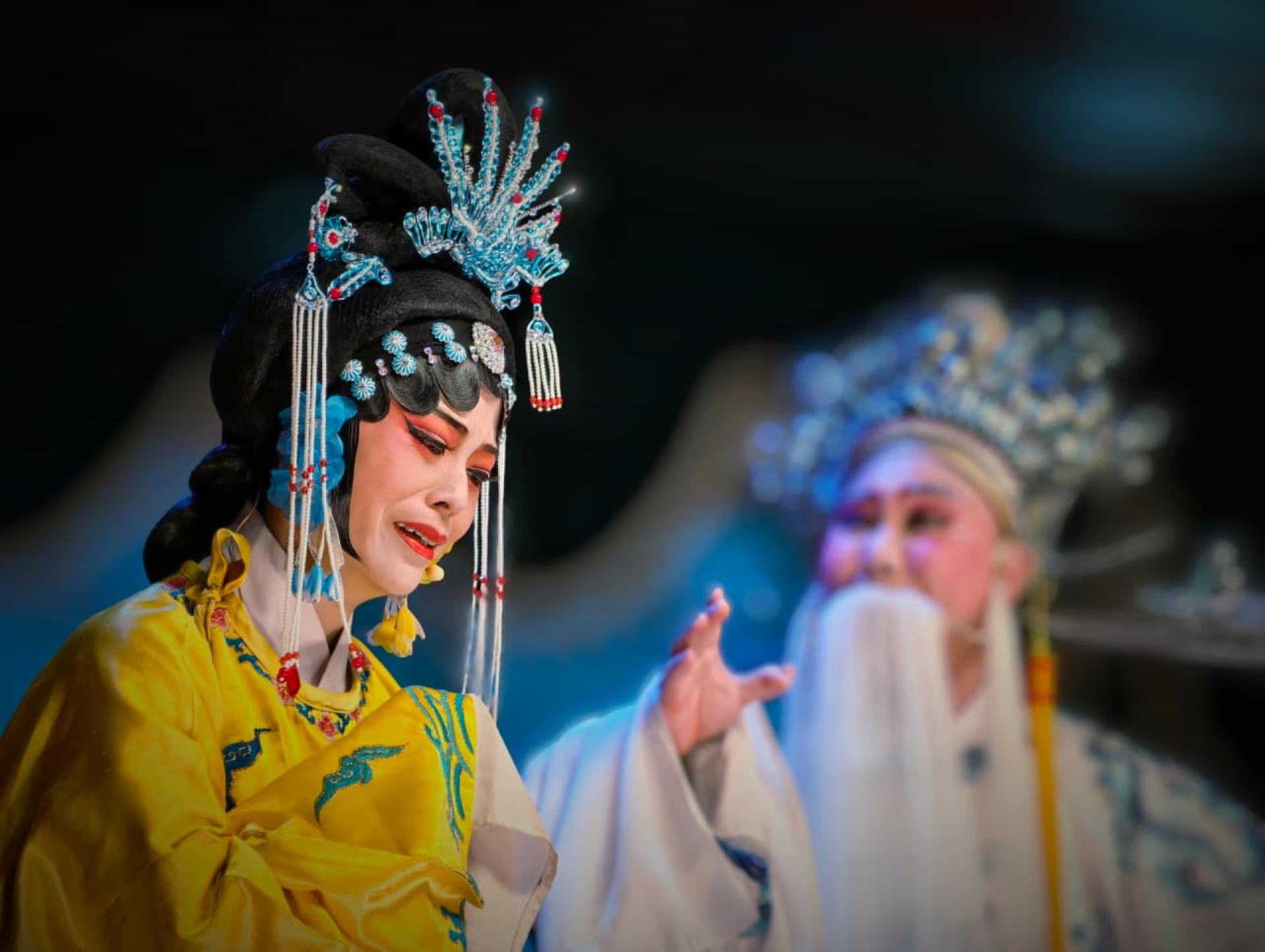(Bandar Seri Begawan, 20th) — After a 5-year absence, the Xiang'an Drama Troupe from Xiamen City, Fujian Province, China, has once again come to Brunei to stage Taiwanese Opera performances.
This is also in conjunction with Tionghun Temple’s celebration of Guangze Zunwang’s millennium birthday, with the troupe making a return to perform Taiwanese Opera at Yun Dian this year.
The 10-night thanksgiving performance is scheduled from the 6th (Monday) to the 17th (Friday) of this month, with different plays presented every night except for the 9th and 16th (Thursdays), offering thanks for divine blessings and creating a lively atmosphere.
The Taiwanese Opera performances not only attract older and middle-aged audiences, but have also drawn a handful of young people to watch.
Additionally, the shows attract photographers who capture spectacular moments and share them with our readers to enjoy.
According to photographer Huang Zhiping, he has attended and taken photos of the annual Taiwanese Opera performances at Tionghun Temple in Brunei for over 20 years.
He mentioned that in the past, he used a camera to take pictures, but as mobile phone camera functions have improved and become more sophisticated in recent years, he has also tried using his phone for photography and is satisfied with the results.
“Photographing Taiwanese Opera focuses mainly on capturing the actors’ expressive eyes and precise body movements — their gestures, glances, and actions.”
What makes these opera photos so captivating is also the actors’ makeup, which accentuates their facial features, as well as their brightly colored, beautifully embroidered costumes.
In short, the charm of Taiwanese Opera actors lies in their accessibility, flexibility, and vibrant vitality. With familiar language, rich gestures, and sincere emotions, they bring traditional stories to vivid life and remain an indispensable part of local cultural memory for many people.
It is understood that the five major roles in Taiwanese Opera — Sheng, Dan, Jing, Mo, and Chou — are the main categories in traditional Chinese opera. Initially, Peking Opera divided roles into these five categories, but later, the Sheng and Mo roles were combined and the Mo category was eliminated, resulting in the current four: Sheng, Dan, Jing, and Chou.
The Sheng role refers to male characters, one of the most important categories, and includes subtypes such as Laosheng (old man), Hongsheng, Xiaosheng (young man), Wusheng (martial man), and Wawa Sheng (child roles).
The Dan role, or Dan character, refers to female roles of various ages, personalities, and social statuses, including Qingyi (main female role), Huadan (flirtatious female), Wudan (martial female), Laodan (elderly female), Caidan (comic female), and Daomadan (female warrior) types.
The Jing role refers to painted-face characters known for their elaborate facial makeup (“Jing” is ironically named as it looks anything but clean). Commonly known as “Hualian” or “Huamian,” these are generally male roles and include Zhengjing (main painted-face), Fujing (secondary painted-face), and Wujing (martial painted-face) subtypes.
This is also in conjunction with Tionghun Temple’s celebration of Guangze Zunwang’s millennium birthday, with the troupe making a return to perform Taiwanese Opera at Yun Dian this year.
The 10-night thanksgiving performance is scheduled from the 6th (Monday) to the 17th (Friday) of this month, with different plays presented every night except for the 9th and 16th (Thursdays), offering thanks for divine blessings and creating a lively atmosphere.
The Taiwanese Opera performances not only attract older and middle-aged audiences, but have also drawn a handful of young people to watch.
Additionally, the shows attract photographers who capture spectacular moments and share them with our readers to enjoy.
According to photographer Huang Zhiping, he has attended and taken photos of the annual Taiwanese Opera performances at Tionghun Temple in Brunei for over 20 years.
He mentioned that in the past, he used a camera to take pictures, but as mobile phone camera functions have improved and become more sophisticated in recent years, he has also tried using his phone for photography and is satisfied with the results.
“Photographing Taiwanese Opera focuses mainly on capturing the actors’ expressive eyes and precise body movements — their gestures, glances, and actions.”
What makes these opera photos so captivating is also the actors’ makeup, which accentuates their facial features, as well as their brightly colored, beautifully embroidered costumes.
In short, the charm of Taiwanese Opera actors lies in their accessibility, flexibility, and vibrant vitality. With familiar language, rich gestures, and sincere emotions, they bring traditional stories to vivid life and remain an indispensable part of local cultural memory for many people.
It is understood that the five major roles in Taiwanese Opera — Sheng, Dan, Jing, Mo, and Chou — are the main categories in traditional Chinese opera. Initially, Peking Opera divided roles into these five categories, but later, the Sheng and Mo roles were combined and the Mo category was eliminated, resulting in the current four: Sheng, Dan, Jing, and Chou.
The Sheng role refers to male characters, one of the most important categories, and includes subtypes such as Laosheng (old man), Hongsheng, Xiaosheng (young man), Wusheng (martial man), and Wawa Sheng (child roles).
The Dan role, or Dan character, refers to female roles of various ages, personalities, and social statuses, including Qingyi (main female role), Huadan (flirtatious female), Wudan (martial female), Laodan (elderly female), Caidan (comic female), and Daomadan (female warrior) types.
The Jing role refers to painted-face characters known for their elaborate facial makeup (“Jing” is ironically named as it looks anything but clean). Commonly known as “Hualian” or “Huamian,” these are generally male roles and include Zhengjing (main painted-face), Fujing (secondary painted-face), and Wujing (martial painted-face) subtypes.
